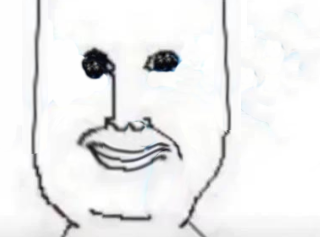Meme transcription [Kid drowning in pool]
In the background a person plays with a kid in the pool. The person is labeled “Companies updating their website”. The kid is labeled “The company logo”.
In the foreground a kid seems to be drowning. It is labeled “Useful information”.
In a second panel a skeleton sits at the bottom of the pool. It is labeled “The copyright year”
My understanding is you don’t actually need to update the copyright year… if anything it’s kinda misleading if you only have the current year
You don’t. It’s the year it was copywrited, not the current year.
Not that a date in a file really is valid evidence, but the point is to define when the copyright occurs. If i come back and say “well i did that same thing before you did” them it would make your copyright invalid.
If you update then you add an additional date.
There’s some good info out there from the good people that know how things should work that created the reuse tool - https://reuse.software/ - and basically the conclusion is that nobody should be updating the years on the copyright line just because it’s a new year. The only useful info and what should be done is put the year when the file is created and that’s it.
Edit: took me a while to find the proper thing I wanted to link - https://matija.suklje.name/how-and-why-to-properly-write-copyright-statements-in-your-code
Had to go first to the recent curl blog where the author wants to go the weird way of not having useful info at all on the files.
Thank you for those two links!! I don’t necessarily have the time right now, but from first glance, those seem super interesting!
I’m not any type of lawyer, especially not a copyright lawyer, though I’ve been informed that the point of having the copyright date is to mark when the work (book, website, photo, etc) was produced and when last edited. Both aspects are important, since the original date is when the copyright clock starts counting, and having it further in the past is useful to prove infringement that occurs later.
Likewise, each update to the work imbues a new copyright on just the updated parts, which starts its own clock, and is again useful to prosecute infringement.
As a result, updating the copyright date is not an exercise of writing today’s year. But rather, it’s adding years to a list, compressing as needed, but never removing any years. For example, if a work was created in 2012 and updated in 2013, 2015, 2016, 2017, and 2022, the copyright date could look like:
© 2012, 2013, 2015-2017, 2022
To be clear, I’m not terribly concerned with whether large, institutional copyright holders are able to effectively litigate their IP holdings. Rather, this is advice for small producers of works, like freelancers or folks hosting their own blog. In the age of AI, copyright abuse against small players is now rampant, and a copyright date that is always the current year is ammunition for an AI company’s lawyer to argue that they didn’t plagiarize your work, because your work has a date that came after when they trained their models.
Not that the copyright date is wholly dispositive, but it makes clear from the get-go when a work came unto copyright protection.
document.querySelector('span#copyright_year').innerText = new Date().getFullYear()No need to specify the tag name in the selector if you’re going to use an ID anyway.
Right - it should have been:
document.querySelectorAll('span#copyright_year').forEach((el) => { el.innerText = new Date().getFullYear() })so that we update all spans with that ID!




